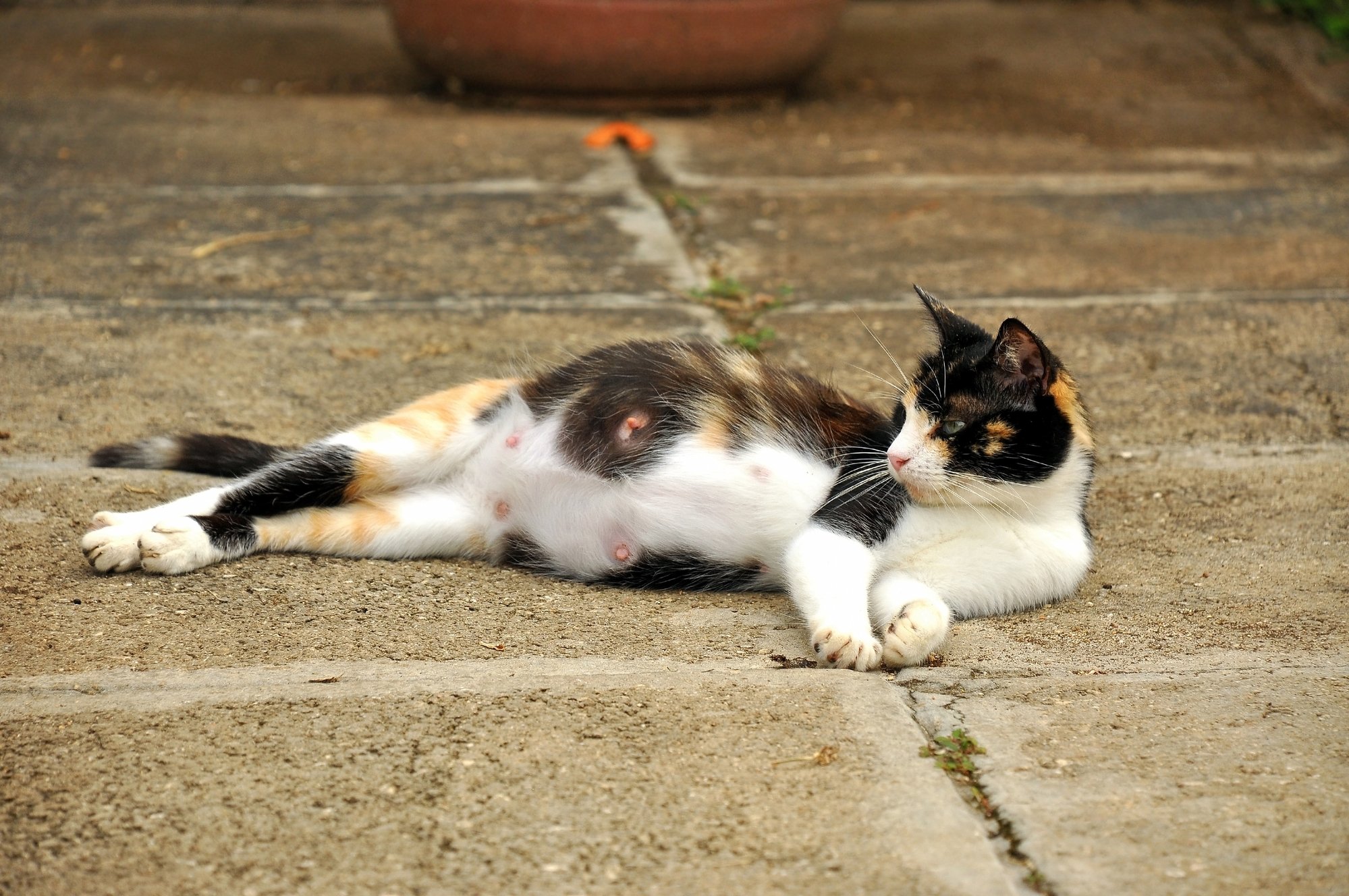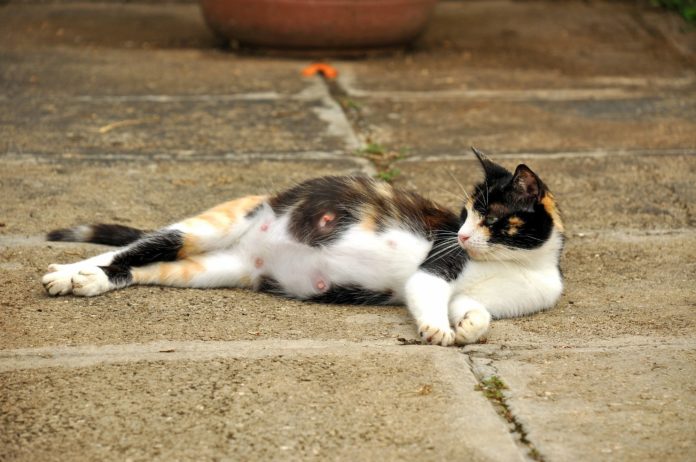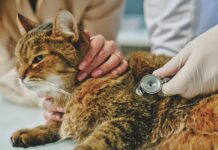paulmckinnon | Deposit Photos

A mammary tumor, aka “breast cancer,” is the third most common type of cancer in cats. Generally, mammary cancer is found in cats 10 years of age and over and usually in females. However, Siamese and Persian cats have a higher risk compared to other breeds and may develop tumors at an earlier age.
Over 85 percent of mammary lumps in cats are malignant. These are often adenocarcinomas, which tend to spread. About 25 percent of cats show metastasis (spread) to local lymph nodes at the time of diagnosis. Although cancer can spread to any organ, in cats, the most common site of metastasis is the lungs. Affected cats may show difficulty breathing and weight loss.
Spaying
Spaying reduces the risk of a cat developing mammary cancer. If you spay your cat before 6 months of age (before her first heat) you reduce her risk by about 90 percent. Spaying before a year of age, but after a heat period, lowers the risk to about 85 percent. Spaying after 2 years old has little influence on the risk.
While the differences are dramatic, they make sense when you understand the influence of hormones. During a heat, the hormones estrogen and progesterone cause the epithelial cells of the mammary glands to enlarge in preparation for nursing. It’s believed that, with no pregnancy and therefore no need for lactation, these cells continue to enlarge, possibly to a pre-cancerous state (remember, cancer is out-of-control, abnormal growth). Adding to the problem, cats are seasonally polyestrous, which means they cycle almost continuously during the breeding season (January until November).
vvvita | Deposit Photos

Signs of Cancer
Mammary cancer is usually found when you’re petting your cat. It may be just a single lump, or it could be multiple lumps along the mammary chain. The individual mammary glands are connected via lymphatic and blood vessels, so there is the possibility of spread along the mammary chain via these vessels. The first and last glands in a chain have a slightly higher risk of cancer than the middle two glands.
Initially, lumps may be about the size of a BB pellet. They are not painful and are usually associated with the nipples. Any lump in this area should be evaluated by your veterinarian. Early diagnosis substantially improves the prognosis. If the cancer has progressed, ulcerated areas may be visible.
Diagnosis and Treatment
Most veterinarians begin with a full examination, bloodwork, and chest radiographs (x-rays) to check for metastasis. After weighing the results, the next option is often a lumpectomy, which is surgically removing the lump and sending the sample for a biopsy. If surgery is a concern, a needle biopsy (removing only some cells from the lump) may be done.In the biopsy, a pathologist examines the removed tissues, looking for signs of metastasis. If the margins (outer edges) of the removed tissue are not “clean,” i.e. free from cancer cells, a more drastic surgery may be required to remove an extra margin of tissue.
The best surgical option to treat feline mammary adenocarcinoma is a radical mastectomy, in which all the mammary glands in one chain are removed. The tissue that is removed is then microscopically evaluated by a pathologist. Several studies suggest that the use of chemotherapy in combination with surgery improves prognosis and often provides relief from discomfort. Palliative radiation therapy may provide some relief from discomfort.
Prognosis
Prognosis depends upon any metastasis and the size of the original mass. For tumors less than two centimeters in diameter (about of an inch), survival is normally three years or more. Cats with masses larger than three centimeters have expected survival times of four to six months. If obvious metastatic disease is found at the time of diagnosis, such as masses present on radiographs in the lungs, the prognosis is grave. Surgery is not recommended in these cases.
Although systemic chemotherapy has not been well studied in cats, available research shows some benefit with increased survival times.




